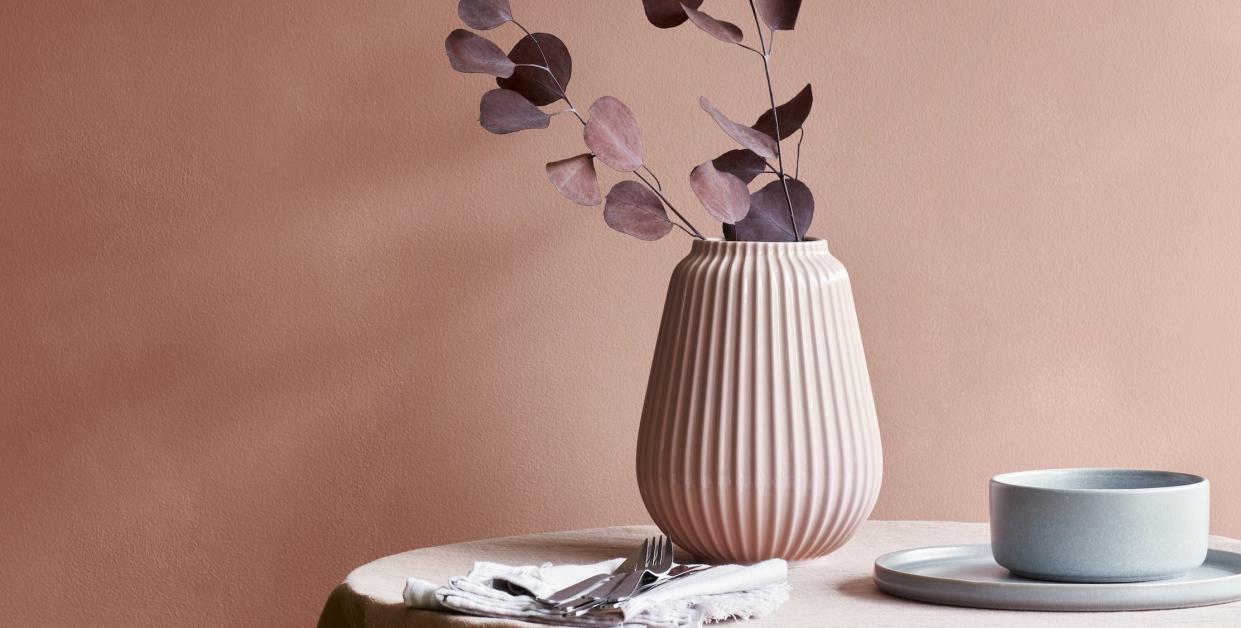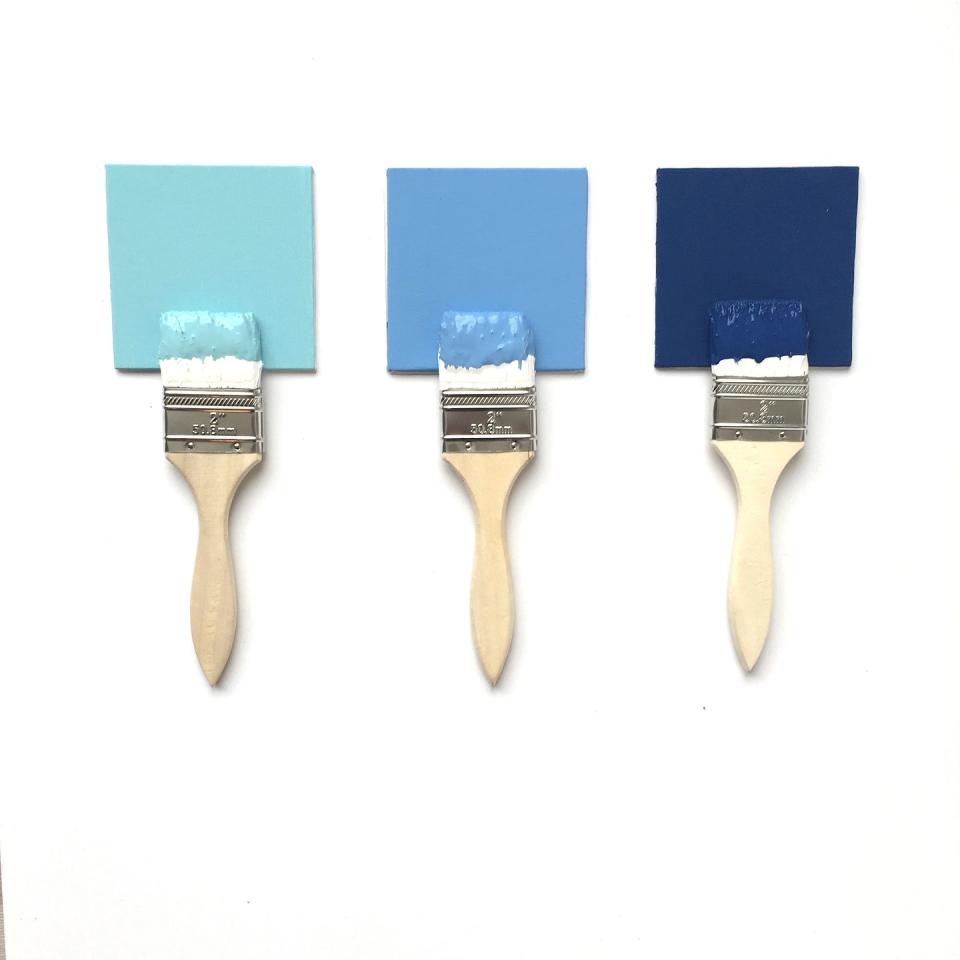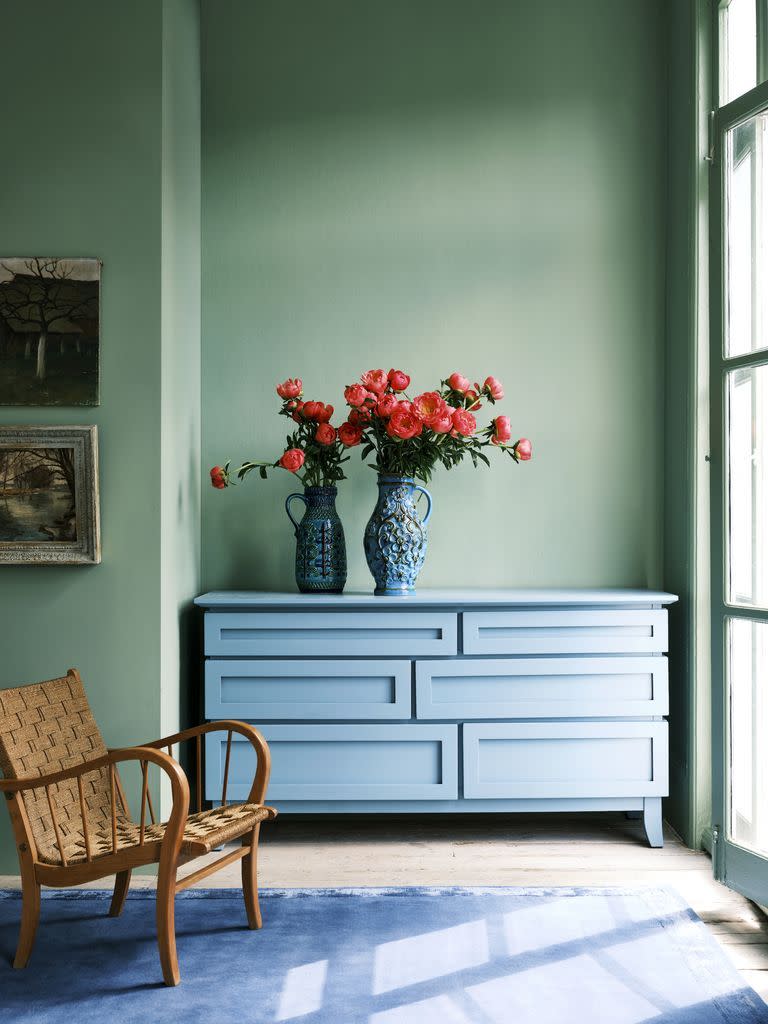Have you been using paint samples all wrong?

Choosing the right paint colour can be a lengthy process and it typically involves buying multiple tester pots – but one paint expert has revealed that the majority of us are actually using paint samples all wrong.
If you're one of the estimated 75 per cent of Brits who paints samples in small squares straight onto the wall before selecting and buying paint, then you won't be getting the most accurate impression of your potential colours.
Michael Rolland, managing director at The Paint Shed, explains: 'As the sun rises and sets throughout the day, you will notice that natural light changes the shade of paint continuously. By painting your sample on the wall, you are only allowing yourself to see a small viewpoint of how the entire room will eventually look.
'The best practice is to paint your sample colour onto paper, ideally A5 or bigger, and position the sample around the room at various times of the day. Using this technique will allow you to see how the paint responds to light, but also how the shade will look on different walls.'

Tip: Buying peel and stick samples (try Lick, Dulux, Coat, to name a few) eliminates this problem – and saves all the mess.
It's vital to consider the impact light can have when selecting a paint colour – those rich in pigment in particular, like Farrow & Ball paint, for example, can vary dramatically with changing lights and in different spaces.

Take time to experiment and find the best paint colour for different facing rooms with Michael's quick guide below:
South-facing: These windows tend to provide the strongest light, which can appear harsh in the afternoon. In the sun, pale/white shades may look duller, and darker colours will be brighter.
North-facing: Due to indirect natural light, dark colours will likely appear darker, with lighter shades being slightly more mute.
East-facing: You will likely notice that you have lots of natural light in the mornings but your room will get typically darker as the day progresses. Darker shades of colour may appear brighter in the mornings but start to look a little drab as the light begins to fade.
West-facing: While your room may be darker in the morning, you get the beauty of the afternoon light – just be cautious with choosing tones such as red and yellow as they may become too overpowering on sunny days.
By using paint samples the right way and taking light into account, you are bound to find the perfect shade to pep up your space and reinvigorate your room.
Follow House Beautiful on TikTok and Instagram.
You Might Also Like



